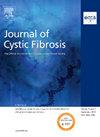Characteristics of individuals with cystic fibrosis in the United States ineligible for ivacaftor and elexacaftor/tezacaftor/ivacaftor
IF 5.4
2区 医学
Q1 RESPIRATORY SYSTEM
引用次数: 0
Abstract
Background
We characterized people with cystic fibrosis (CF) ineligible by genotype (not age) for currently approved CFTR modulator therapy using data from the US CF Foundation Patient Registry (CFFPR).
Methods
We summarized clinical characteristics using CFFPR data from 2017 to 2022. Annual rate of change in percent predicted of forced expiratory volume in one second (ppFEV1) was estimated using generalized estimating equations.
Results
A total of 2,790 individuals with CF met inclusion criteria. In 2022, 12 % were less than 6 years old, 16 % were age 6–12 years, 18 % age 12–18 years and 54 % were ≥18 years. The proportion identified as White was 74 %, 17 % Black, and 26 % as Hispanic. The median (IQR) age at diagnosis was 1.2 (0.5, 9.1) months for children and 3.1 (0.3, 17.4) years for adults. Median (IQR) ppFEV1 among children was 91.9 (80.3; 102.4) and among adults, 74.3 (52.4; 90.4). Pancreatic enzymes were prescribed for 77.8 %. Population-level average (95 % CI) rates of decline in ppFEV1 among the pancreatic insufficient population was -1.5 per year (-1.8; -1.2) for ages 6 to <11 years, -2.2 per year (-2.6; -1.8) for ages 12 to <18 years, and -1.5 per year (-1.7; -1.3) for adults.
Conclusions
We describe the CFTR modulator ineligible population in the US in 2017–2022. With a growing pipeline of therapies aimed at improving CFTR function for those who cannot benefit from modulators due to ineligibility, characterization of both the size and outcomes of these populations are critical to inform optimal clinical development plans and future clinical trials.
美国不符合伊伐卡夫托和 elexacaftor/tezacaftor/ivacaftor 治疗条件的囊性纤维化患者的特征。
背景:我们利用美国 CF 基金会患者登记处(CFFPR)的数据,描述了因基因型(而非年龄)不符合当前批准的 CFTR 调节剂治疗条件的囊性纤维化(CF)患者的特征:我们利用 2017 年至 2022 年的 CFFPR 数据总结了临床特征。使用广义估计方程估算了一秒钟用力呼气容积(ppFEV1)预测百分比的年变化率:共有 2790 名 CF 患者符合纳入标准。2022年,12%的患者小于6岁,16%为6-12岁,18%为12-18岁,54%为≥18岁。白人占 74%,黑人占 17%,西班牙裔占 26%。儿童确诊年龄的中位数(IQR)为 1.2(0.5,9.1)个月,成人为 3.1(0.3,17.4)岁。儿童ppFEV1的中位数(IQR)为91.9(80.3;102.4),成人为74.3(52.4;90.4)。77.8%的患者服用了胰酶。在胰腺功能不足的人群中,ppFEV1 的人群平均下降率(95 % CI)为每年-1.5(-1.8;-1.2),年龄从 6 岁到结论:我们描述了 2017-2022 年美国 CFTR 调节剂不合格人群的情况。随着旨在改善因不符合条件而无法从调节剂中获益的人群的 CFTR 功能的治疗方法不断增多,确定这些人群的规模和结果对于优化临床开发计划和未来临床试验至关重要。
本文章由计算机程序翻译,如有差异,请以英文原文为准。
求助全文
约1分钟内获得全文
求助全文
来源期刊

Journal of Cystic Fibrosis
医学-呼吸系统
CiteScore
10.10
自引率
13.50%
发文量
1361
审稿时长
50 days
期刊介绍:
The Journal of Cystic Fibrosis is the official journal of the European Cystic Fibrosis Society. The journal is devoted to promoting the research and treatment of cystic fibrosis. To this end the journal publishes original scientific articles, editorials, case reports, short communications and other information relevant to cystic fibrosis. The journal also publishes news and articles concerning the activities and policies of the ECFS as well as those of other societies related the ECFS.
 求助内容:
求助内容: 应助结果提醒方式:
应助结果提醒方式:


